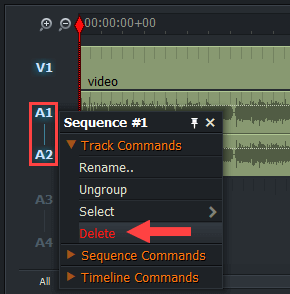

It’s estimated that 73 percent of Internet traffic is video, and future projections show that it will increase to 82 percent by 2021. Social media has exponentially increased the number of creators and viewers alike. Video is far beyond its roots as physical media being confined to an object and playback device. Instagram supports wide, vertical and square aspect ratios, allowing you to choose the format that best fits your video and its other potential uses. It lends itself to a degree of authenticity and low-fi integrity that is appealing to viewers looking for a personal connection. Vertical is a format that’s been proliferated by users creating their own content with their phones. Vertical video does have its place, as well. If the video is going to be delivered on other social platforms, such as Facebook and Twitter, the square aspect ratio is a safe bet. Square video, with its 1:1 aspect ratio, is the most successful aspect ratio used in social media today. The traditional landscape video is a great option when using the Instagram video for other deliverables that use that format, such as YouTube or broadcast. Video traditionalists might cringe at the thought of delivering vertical video, but there’s a place and use for all three ratios. Instagram presents a unique opportunity with its delivery of three different aspect ratios. This will help to ensure a longer life for the video, should the platform’s presentation sizes increase in the future. Regardless of the range of sizes available for output, it’s best practice to output the video at the highest resolution and quality acceptable by Instagram. Using a video compression application like Adobe Media Encoder, you can make rendering output templates specifically for Instagram videos. Knowing the range of resolution for uploads to Instagram helps the video producer know the target for output. Anything smaller than these sizes would be scaled up, risking the appearance of pixel and compression artifacts. The minimum size for vertical video is 480×600, while the minimum size for square video is 600×600. For landscape video the display size is 600×337. So there is a minimum size recommendation for Instagram to ensure that the video will display correctly.

Retina displays and High Pixel Density displays are the exceptions. It’s important to note that although Instagram will store a file at a resolution of up to 1080 pixels wide, it displays that file at a smaller size on most mobile devices. Videos that are uploaded at a larger size get recompressed and downscaled to the 1080 pixel width. For this reason, it is the default size for storage by Instagram. The 1080 pixel width version is used for playback on retina displays. Width is the standard measurement for resolution because Instagram serves up video in three different aspect ratios standard landscape (1.91:1), square (1:1), and vertical (4:5).

The maximum resolution for the file should be 1080 pixels wide because this is the largest size that Instagram will store. mp4, rendered with the H.264 codec at 3500 kbps bitrate and AAC audio at 128 kbps bitrate. A better understanding of the Instagram platform can help you prepare your renders for social media success. The one who “understands” video ends up with a shelled husk of a production, while the “inexperienced” creator makes a piece of art. Compare this to the novice with an itchy phone finger who kicks out a video masterpiece, and you can see where the danger lies. This can result in your high-end video getting crunched down to a digital mess. Someone who’s used to delivering high-fidelity content to a post-house for distribution is at risk of overdoing it for Instagram. While Instagram’s tools are great for the social scene, they aren’t necessarily built with video professionals in mind. There is a danger in all of this simplicity for the video professional. Users can beautify a quick recording with templated color grades and shared to thousands in the blink of an eye. It’s a process that anyone with a mobile phone can master in minutes. Instagram is a prolific platform for sharing video, but the nuts and bolts of Instagram video are something of a mystery. The platform makes the process of creating, posting and sharing videos simple.


 0 kommentar(er)
0 kommentar(er)
